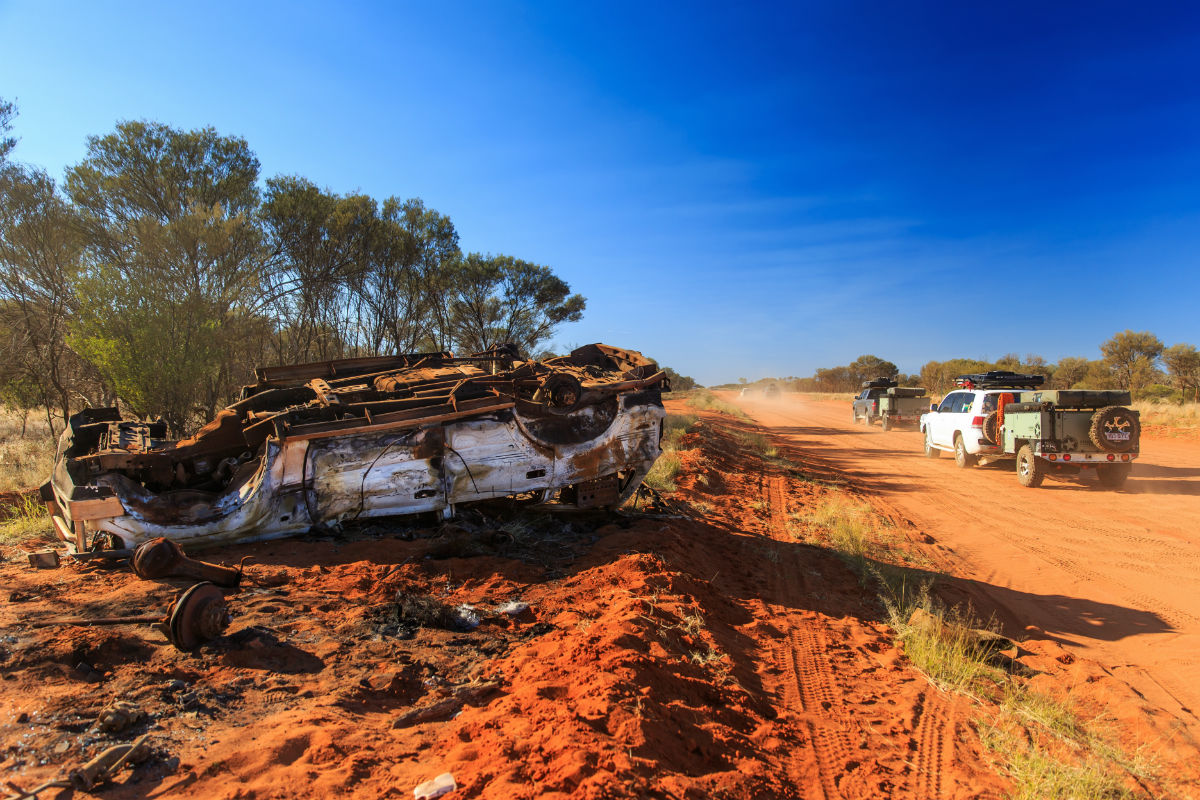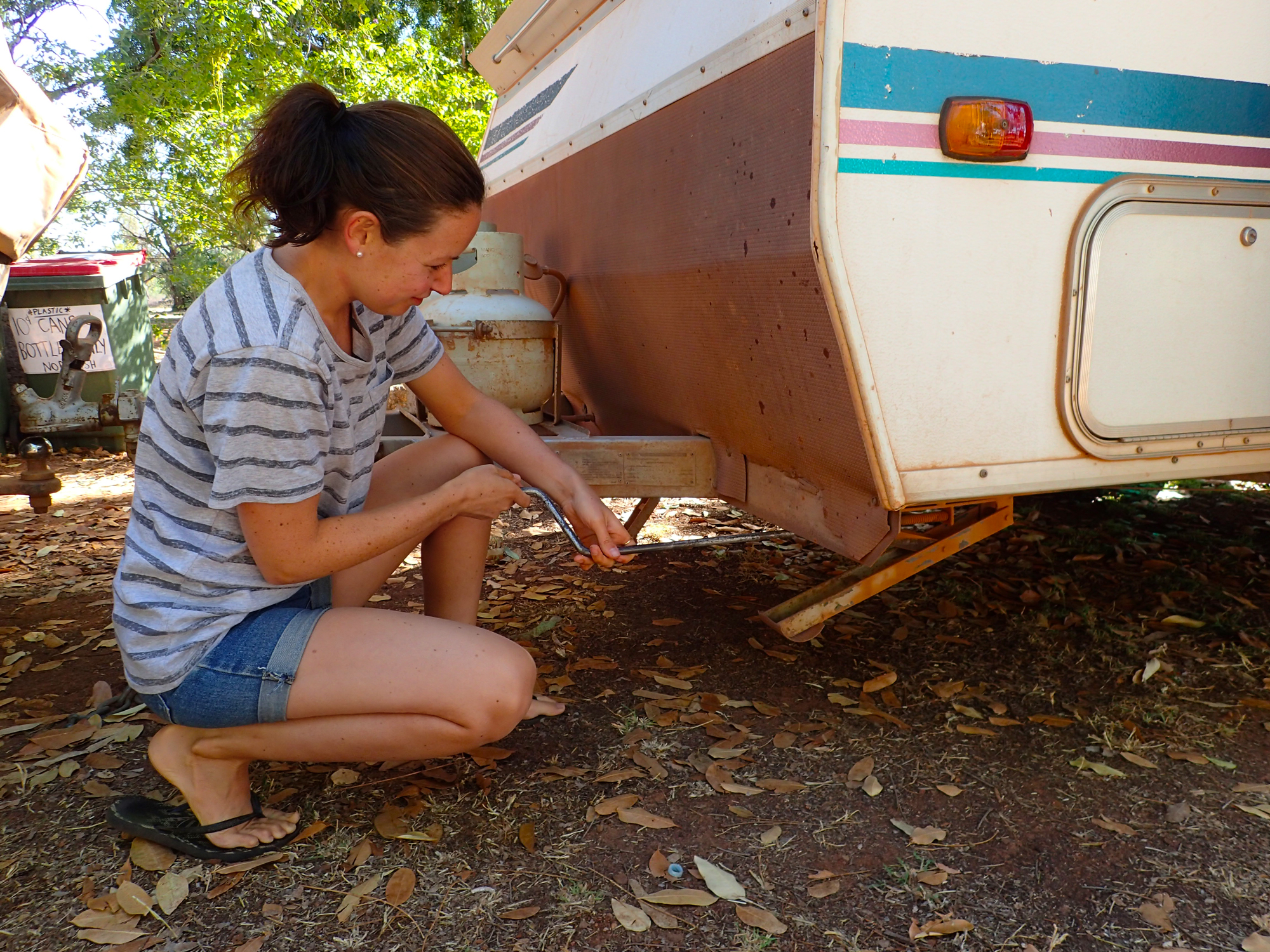From giving way to ambulances to your obligations at an accident, here’s the low down on handling an emergency on the road while towing.
You’re on the move and travelling at speed. The fascinating outback, a panorama of gold, green and red, lies before you. A glance in your mirrors reveals an ambulance rapidly coming up behind you, its emergency lights flashing, its siren blaring. You are between the ambulance and a life threatening emergency somewhere ahead.
Reality bits. The road that had felt so accommodating offers a single lane in both directions and the shoulder is deep loamy soil waiting to snare you and your caravan, potentially causing you to jack-knife. Perhaps it’s also steep, dropping away rapidly to paddocks of sharp, inhospitable gibber. Before you make a foolish decision that might see you as the next traveller that needs saving, here’s some handy advice.
GIVING WAY TO AN APPROACHING AMBULANCE
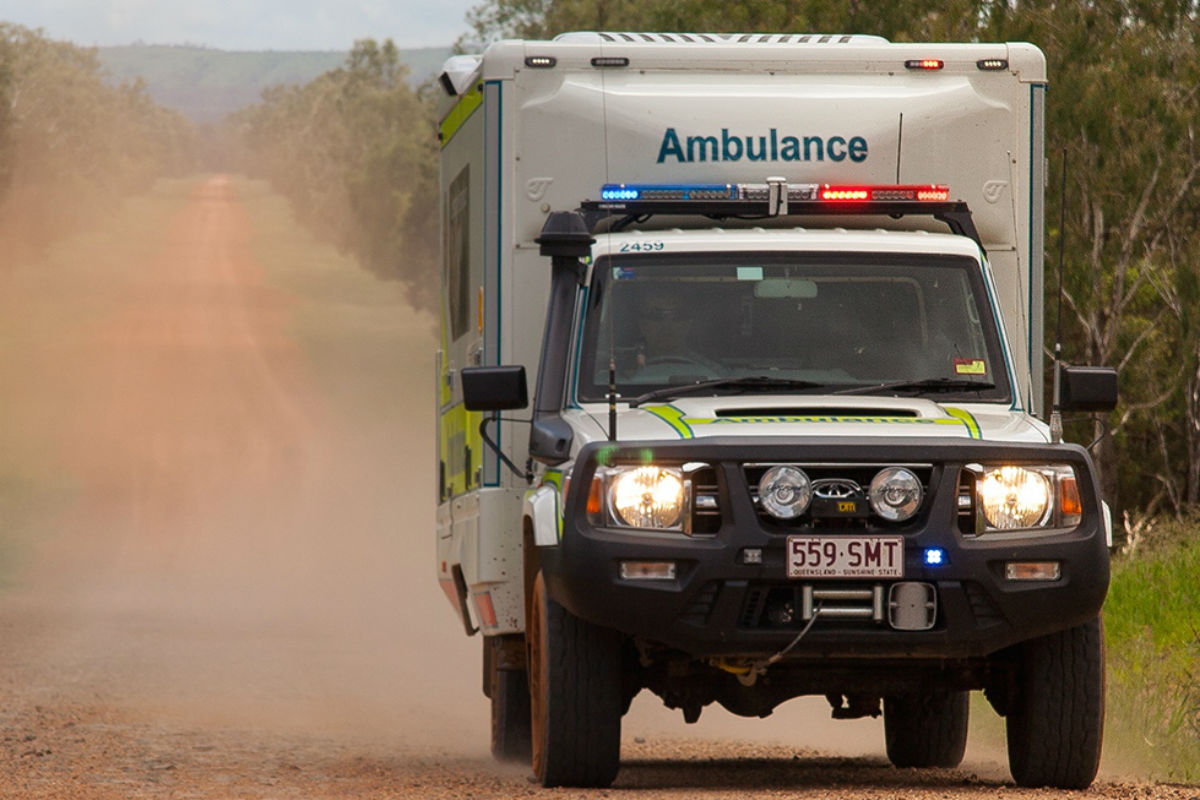
In every state in Australia, when an ambulance approaches under lights and sirens you legally must give way. But you must do so safely, which is more complicated when towing.
With 20 years experience as an ambulance officer, Queensland Ambulance Service Superintendent Gavin Farry has the answers. Moreover, his experience looking after the Queensland Outback’s Central West region centred on Longreach and covering an area larger than Victoria means that he’s in a remote region that’s also very popular with caravan owners. Here are his top tips for giving way to an ambulance while towing.
STAY VIGILANT
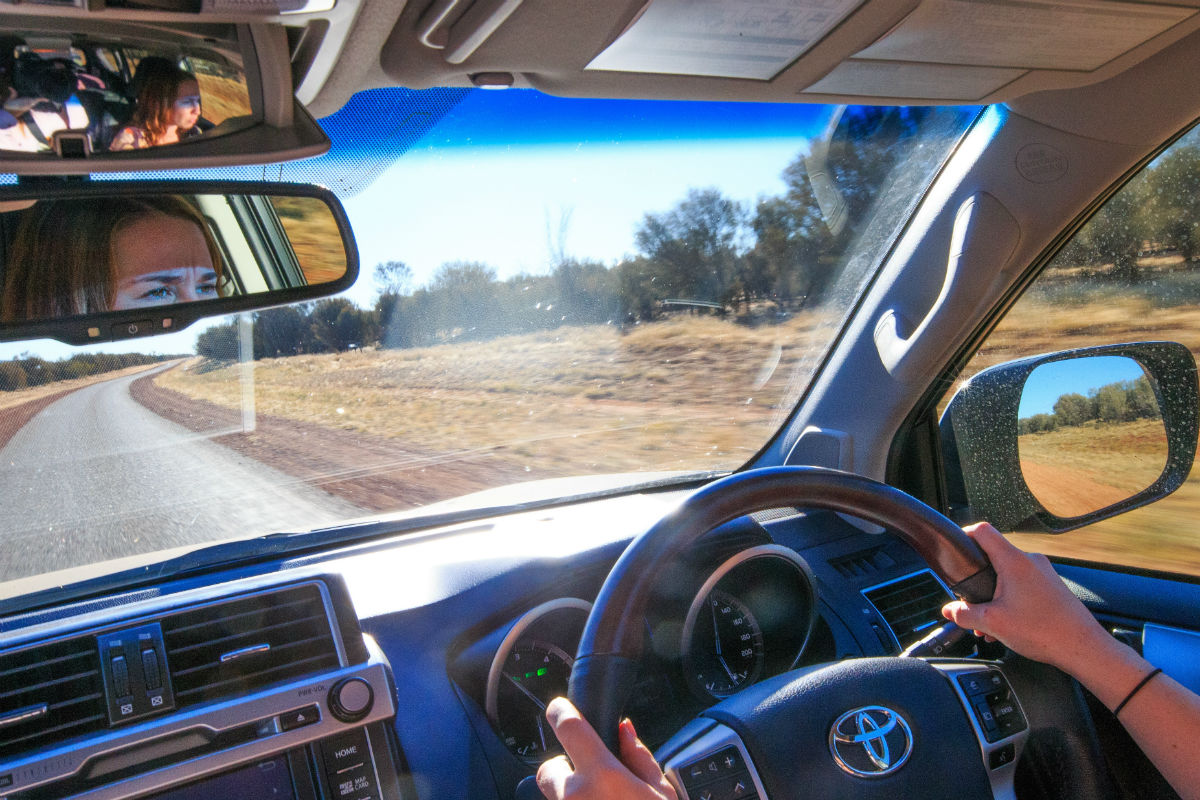
When towing a caravan, be aware of your surroundings at all times by constantly checking your mirrors.
“Nowadays drivers tend to drive around with their windows wound up, so you often won’t hear an ambulance but you will probably see it,” Farry says.
MOVE LEFT CAREFULLY, IF SAFE
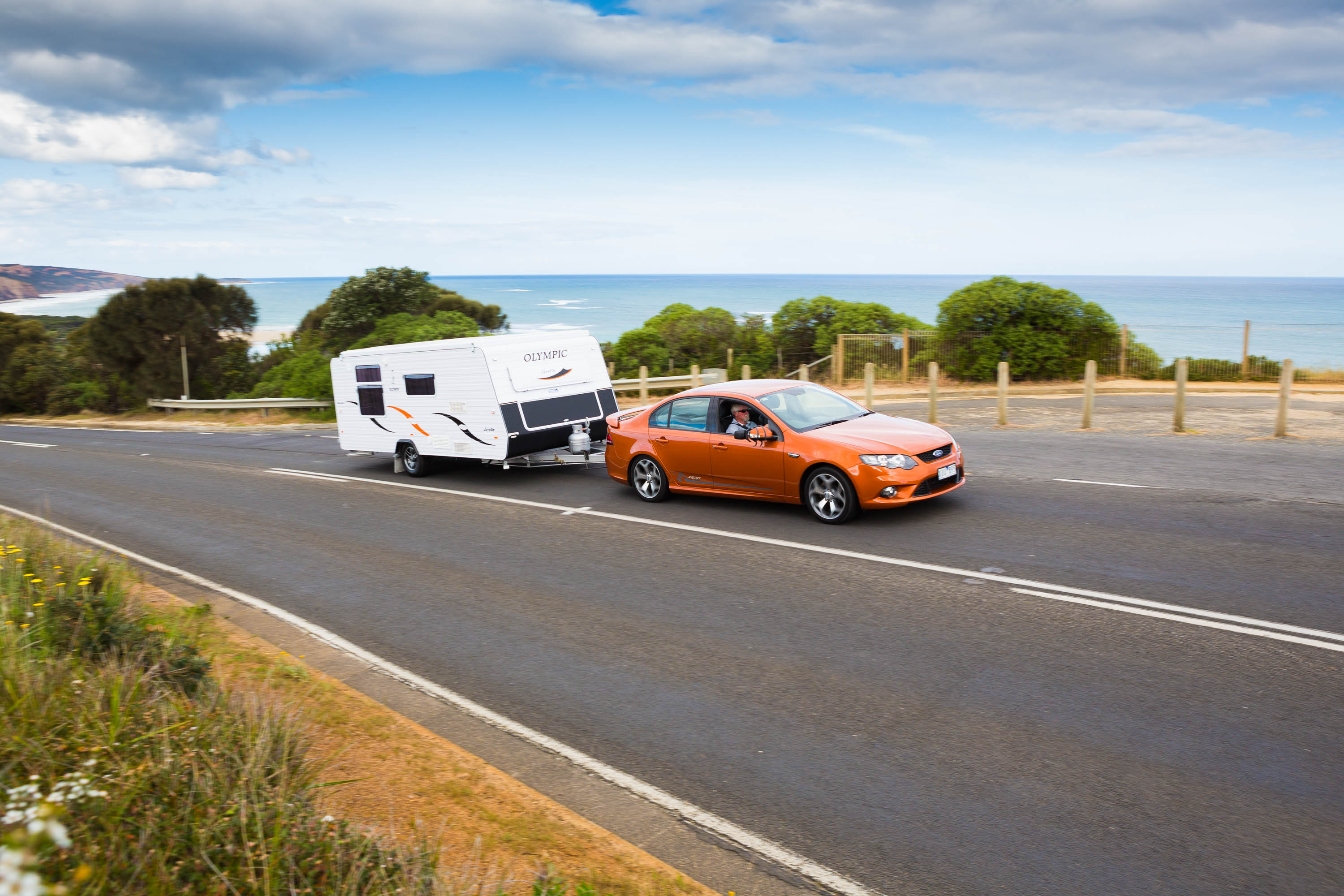
When you do see an ambulance in your mirrors, keep calm and don’t feel pressured to stop your vehicle immediately.
“It’s imperative that driver’s remain safe. What we want them to do once they’ve identified an ambulance is to slow down gradually and be aware of the road surface and conditions.” He adds, “Ideally drivers should then pull over to the left hand side of the road, but only if the conditions are safe.”
“We don’t want caravanners to tow their vans towing to the side of the road if shoulders are quite soft or dangerous,” he says.
If a vehicle stops without regard for traffic or road conditions, the traveller may end up just hampering the ambulance’s progress because overtaking at that time might be unsafe.
AMBO’S CALL
An approaching ambulance will only overtake travellers when they feel it’s safe to do so; using hand signals to try and tell the ambulance when you feel it’s safe for them to overtake is pointless.
“Hand signals will be ignored. We will move around when we feel it’s safe to do so,” he says. That means caravanners should not feel angry or frustrated when their well-intentioned hand signals are ignored.
DON’T SPEED
For safety’s sake, caravanners should not feel that, if they can’t move to the side, they should accelerate to allow the ambulance to move quicker. This can be dangerous and ultimately do more harm than good.
WHAT TO DO IF YOU FIND AN ACCIDENT
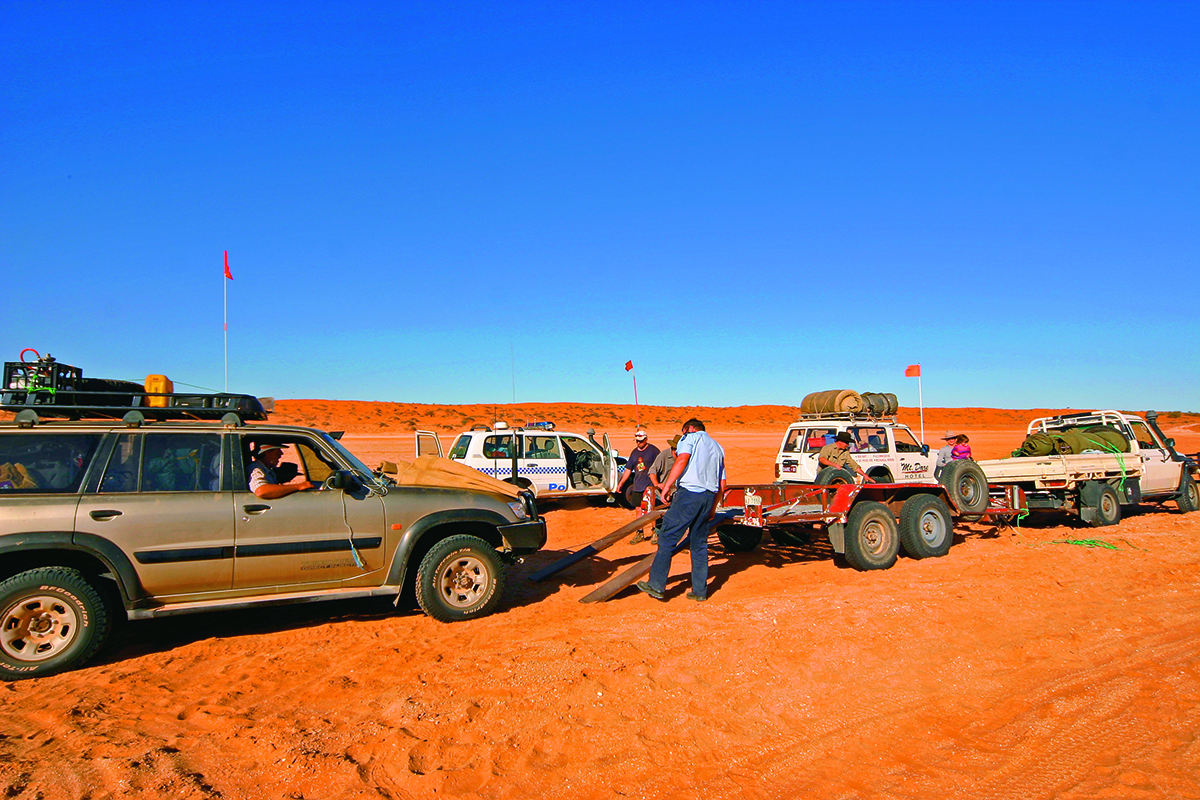
In the event of discovering a road accident while towing, the most important consideration is that you remain safe when avoiding debris and be mindful of the potentially dangerous location of the accident, for example on a blind corner.
If you pull over to attend an accident, you need to give at least 200m distance between you and the accident for other drivers to see you and slow down.
“We have had some really sad cases throughout Australia where people have been struck by a vehicle while assisting at a road accident,” Farry says.
“It’s imperative if you are going to attempt to assist that you set up a way to notify the traffic that there’s an accident ahead,” Farry says. That will help keep everyone out of harm’s way especially on an outback highway frequented by long road trains that take significant time to stop.
Next up, call 000 to notify emergency services of the situation and get advice on how to handle things until they get there.
EMERGENCY EQUIPMENT YOU SHOULD CARRY
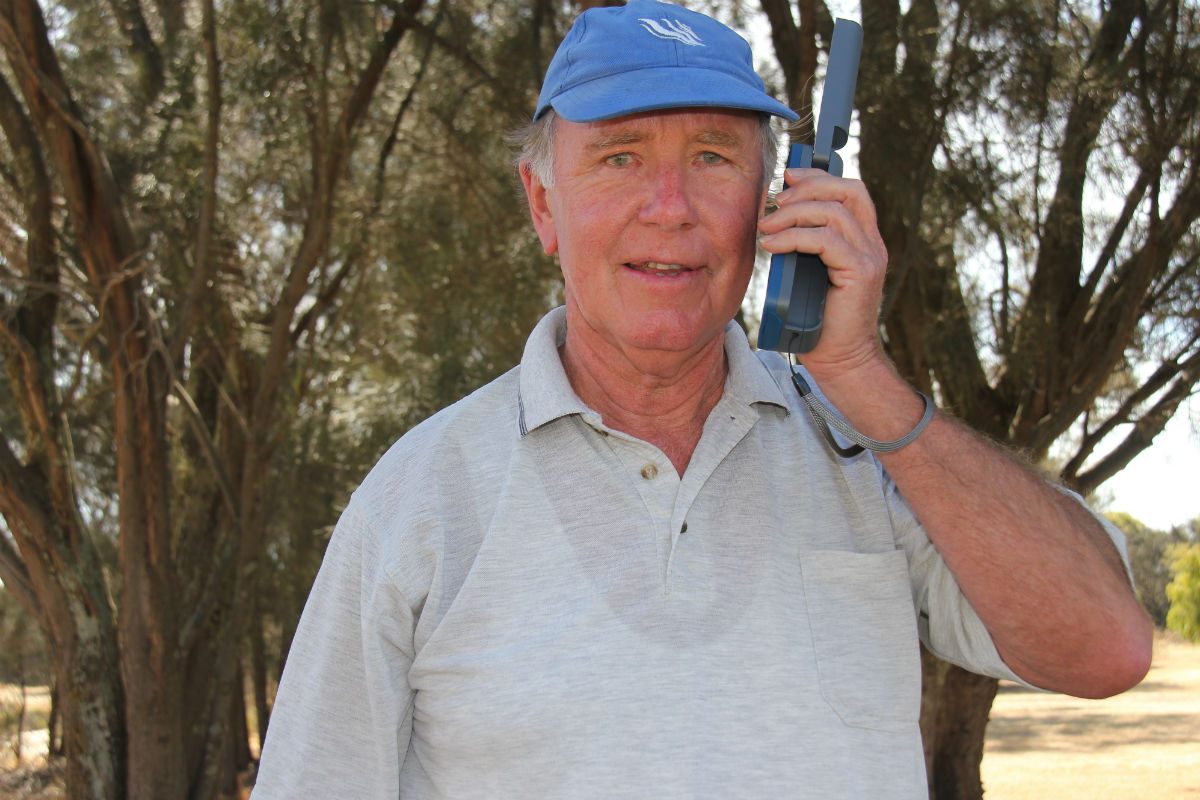
Gavin Farry says a first aid kit is essential. Beyond that he recommends downloading a free phone app called Emergency Plus, which provides GPS coordinates of the location of the accident.
“The coordinates can then be provided to the emergency dispatcher to pinpoint the patient’s exact location. This could save valuable time in an emergency if the caller isn’t exactly sure where they are,” he says.
In addition, Farry says Hema maps or a portable GPS device together with a CB or UHF radio are also useful to help communicate with emergency services.

